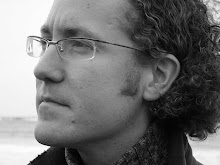A couple of months ago, I got an unexpected email with the subject “Would you like to speak at DreamWorks Animation”. Naturally, I initially considered it a scam and replied cautiously. Their response left no doubt that it was indeed Hollywood calling.
The idea that a cognitive psychologist from London might be of interest to a Hollywood animation studio might seem odd. What the filmmakers were interested in was my recent work on how we attend to and perceive the real world.
My research usually involves showing volunteers simple patterns or photographs on a computer screen and recording how they move their eyes when trying to make sense of the image. This provides me with insights into how someone uses their eyes to sample the bits of the visual world they are interested in, stitch the details together and store them in memory. In the last few years I began applying the same methods to investigate how we watch film after the realisation that we use the same cognitive processes to watch film as we use to look at the real-world.
Films present an artificial world across a series of camera shots edited together so that only the bits important for the narrative are presented. When Shrek leaves his swamp to find Princess Fiona, for example, we only need to see him leave his house and then arrive at the Fairytale castle to work out the journey that must have happened in between. Films can create fantastical events and spaces that we can comprehend without any effort, as long as the film is edited correctly. But what distinguishes a “good” from a “bad” edit? In my research I have been trying to understand the Psychology of film viewing to answer this question.
Like all Hollywood film studios, Dreamworks Animation want to make their films as enjoyable and as effortless to watch as possible. Confusing films don't lead to big box office receipts, especially not when the film is intended for children.
At every moment during a film, the director needs to know exactly where the viewer is looking, how they are understanding the story and what they are feeling- this is no trivial task. If an edit occurs at the “wrong” time during an action sequence or cuts to the “wrong” camera position, the viewer can become disorientated and confused. In film terms, the cut is said to create a “discontinuity”. Over the 116 years cinema has existed, a suite of heuristics (rules-of-thumb) have evolved that filmmakers can use to help them avoid bad edits. These rules of continuity editing suggest, for example, that when filming a scene with two actors in a conversation, all shots of the action should be filmed from the same side of an imaginary line connecting the two actors. This 180 degree rule (named because the cameras will map out a 180 degree arc around the actors) ensures that the actors don't suddenly reverse direction on the screen across a cut and appear to be facing away from each other. Virtually all film and TV is constructed according to these rules. Watch a scene from any TV show and you will see how the cameras always stay on one side of the action.
While the continuity rules are believed to work by filmmakers the world over nobody understands why they work. Dreamworks Animation wanted to know if my experiments in film viewing could shed any light on this question.
By recording the eye movements of viewers as they watch film sequences I have been able to see which cinematic techniques succeed in guiding the viewers to the point of interest in a scene and whether a cut leads to disorientation. For example, if the action of a scene is easy to follow all viewers will watch the scene in the same way, leading to a clustering in the location of their gaze on the screen.
Puss In Boots teaser trailer with gaze location of 16 viewers from Tim J. Smith on Vimeo.
To get a sense of this gaze clustering watch this trailer for Dreamworks Animations upcoming Puss In Boots (http://vimeo.com/25033301). The gaze locations of 16 viewers are each represented as a dot and a hotspot overlaid on to the video. As the gaze of multiple people clusters together the colours become hotter. Notice how the gaze is clustered on Puss throughout the clip without taking in much of the background. This clip also uses the continuity editing rules to ensure that viewers shift their attention seamlessly across a cut. When Puss tosses his hat off the screen the cut is made right after the hat starts flying. The next shot continues the hat’s motion until caught by an enamoured admirer. Such a cut is referred to as a “match on action”. By using the sudden onset of motion to capture viewer attention and lead the eyes across the cut, the director ensures that the viewer perceives the two shots as being continuous. You can see this in the smooth shift in eye movements from one shot to the next.
At Dreamworks, I was struck with how intimately they engaged with the issues I was presenting. Their day-by-day concerns are with the minutae of film, the nuanced animation of a facial expression, the placement of characters across a cut, the correct lighting to pick out the main character. To make these decisions, though, they have to imagine themselves as their eventual viewer and, until now, they have had no way of knowing what was going in the mind of these viewers. I hope that combining some of the methods and theories from cognitive psychology with their own insights about film, they will get a clearer glimpse of this insight. I believe that studying the psychology of film will help filmmakers continue to improve upon the kinds of unique, exciting, and moving experiences that enraptured me when I was a kid and continue to fascinate us all today.




